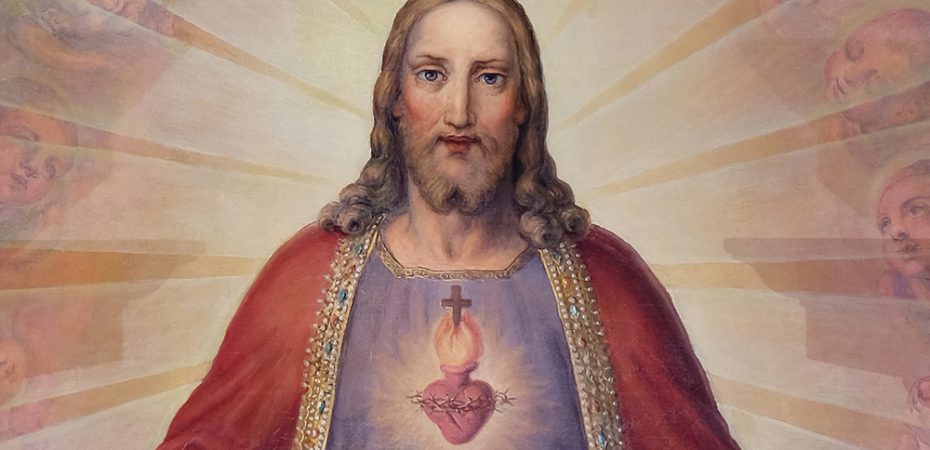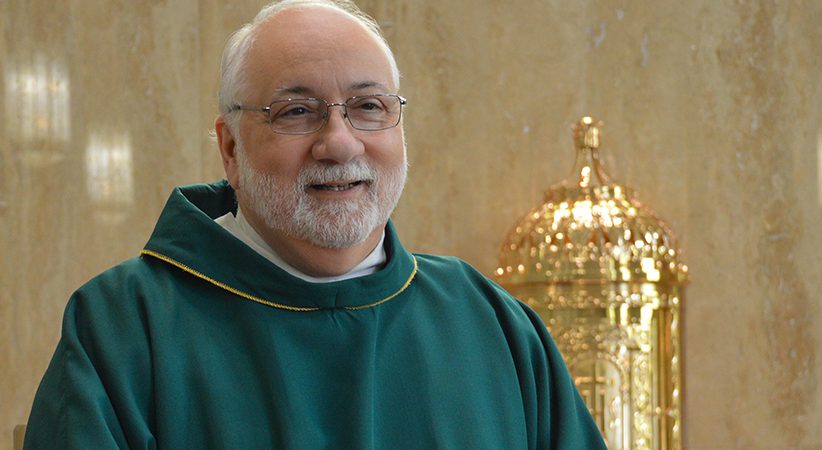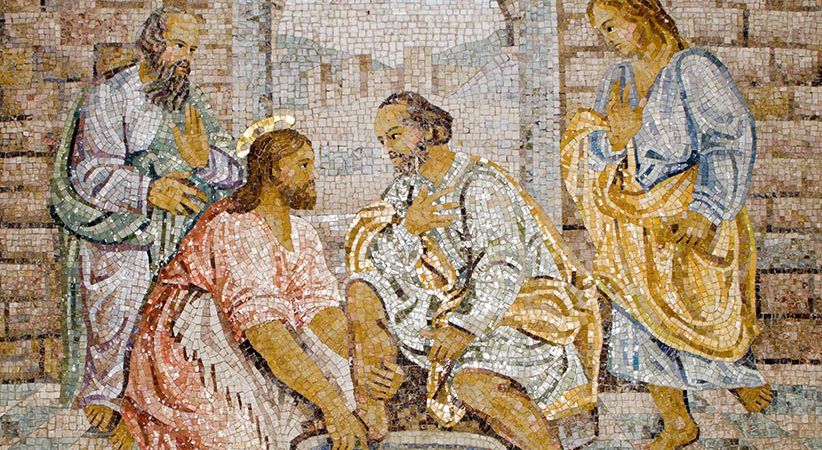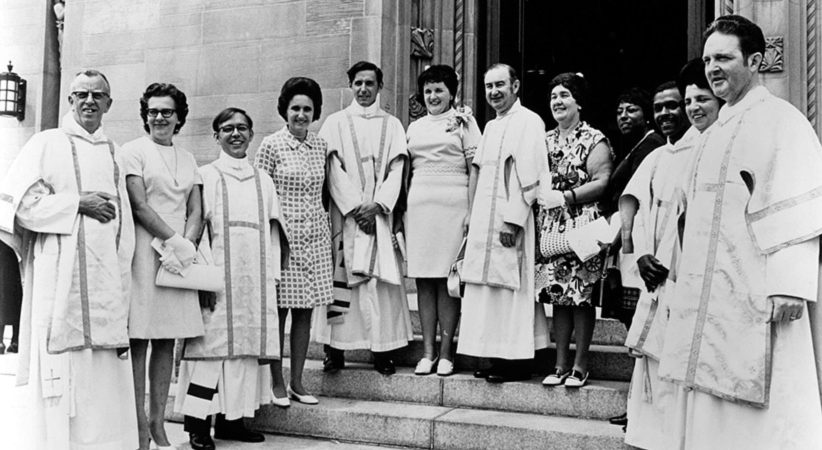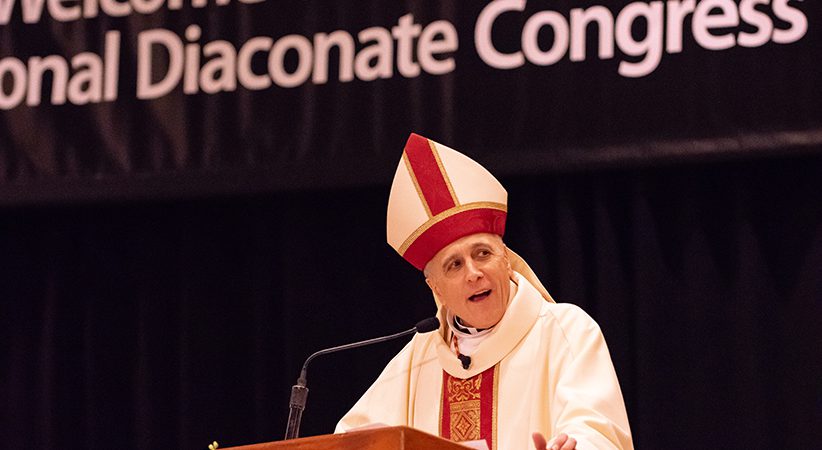A Beauty that Wounds
The deacon is wounded by Christ’s inner beauty, particularly as it is revealed in the Servant Mysteries
Deacon Dominic Cerrato Comments Off on A Beauty that Wounds
The following is an excerpt from “Encountering Christ the Servant: A Spirituality of the Diaconate” (OSV, $18.95) by Deacon Dominic Cerrato.
In his excellent book “The Heart of the Diaconate,” Deacon James Keating speaks of ordination as a kind of deep wounding. In this wounding, the deacon’s heart is lacerated by Christ’s own beauty and the beauty of His mission. This way of speaking only makes sense when ordination, and indeed the whole of the diaconate, is understood within the context of a deep intimate communion with Christ the Servant.
To better appreciate this notion of woundedness, it would be helpful to use the analogy of marriage. In marriage, a husband, deeply in love with his wife, is wounded by her inner beauty. He sees in her something so precious that he’s driven to his knees, injured, so-to-speak, by her profound loveliness. Popular romantic terms such as longing, pining, and yearning all bespeak the kind of suffering that comes from a woundedness inflicted by her beauty. A similar illustration occurs on St. Valentine’s Day with a heart pierced by an arrow. Here, it’s important to recognize that this kind of beauty isn’t mere physical allure but something much deeper. It concerns the attractiveness of her entire being such that her being makes up what is missing in him. She fulfills an emptiness, and her presence brings a kind of fulfillment and satisfaction. Consequently, what is desired isn’t something about her, some desirable trait, but simply her.
In the diaconate, the deacon is wounded by Christ’s inner beauty, particularly as that beauty is revealed in the Servant Mysteries. The deacon sees in these mysteries a Servant so precious that he’s driven to his knees, injured, so-to-speak, by the outpouring of this Servant’s love for humanity and for him. As the deacon allows Christ to draw close, particularly through the Servant Mysteries, His Divine Presence reveals an emptiness within the deacon, a place that Christ the Servant, and only Christ the Servant, can fill. So, prior to ordination, and even after, he longs, pines, and yearns for this fulfillment — and this bespeaks the kind of suffering that comes from a woundedness inflicted by Christ’s beauty. Because this fulfillment won’t reach its perfection until he stands before the throne of God and is judged worthy, this woundedness, and the suffering that accompanies it, will last throughout his diaconate, bringing with it a fulfillment that’s never quite fulfilled, a satisfaction that’s never quite satisfied.
Here what attracts isn’t something about Christ — but instead something much deeper. It concerns the attractiveness of His entire being, such that His being makes up what is missing in the deacon. Christ the Servant fulfills an emptiness, and His Divine Presence brings a kind of consolation that overcomes any desolation. Consequently, what is desired isn’t something about Christ, some desirable trait, some aspect of His ministry, but simply Him.
Ordinarily, we think of wounding as something negative and, in many respects, it certainly can be. This negative kind of wounding is characterized by a malicious intent, often accompanied by physical or emotional violence. Here, the one being wounded is treated as some kind of object to be used, possessed, and discarded at the end of the day. This negative wounding is antithetical to the kind of positive wounding found in such relationships as marriage. Positive wounding, on the other hand, is characterized by a beneficial intent accompanied by a deep consideration for the other. Here the one being wounded, in this case the husband, isn’t treated by the one wounding, his wife, as an object to be used, but rather as a person to be loved, respected, and valued. In this case, the husband, so moved by the beauty of the wife, doesn’t desire to possess her as in negative wounding, but instead, be possessed by her. In this dynamic, love moves between the husband and wife in a mutual way such that both allow themselves to be wounded by the other.
Likewise, the wounding received in ordination, and lived throughout a deacon’s life, is characterized by a beneficial intent accompanied by a deep consideration for the other. Here the one being wounded, in this case the deacon, isn’t treated by the one wounding, Christ, as an object to be used, but rather, a person to be respected and valued. The deacon, so moved by the beauty of Christ the Servant, doesn’t desire to possess Him, but instead, be possessed by Him. In this dynamic, love moves between the deacon and Christ in a mutual way such that both allow themselves to be wounded by the other.
For wounding to take place on the level of marriage, the beauty that attracts must be unique and proper to the couple. This happens when both recognize a calling, a vocation, to marry each other. The world is chock-full of people who possess inner beauty and, while all of them are attractive in some way, only one can be chosen to share in the mutual woundedness that is marriage. In this case, woundedness is exclusive to one. Only one can be permitted to wound me, and certitude that this is the one comes when she desires to be wounded by me. In this respect, there’s always a double wounding.
The same is true with the diaconate. When discerning, the candidate may want to be wounded by ordination, but if the formators representing the local bishop don’t recognize the particular kind of beauty proper to the diaconate in the candidate, then the discernment process can’t move forward. Ordination represents not simply a wounding of the one being ordained, but the willingness of the Church, and by extension Christ the Servant, to be wounded by him. Christ already bears these wounds for the deacon through the Paschal Mystery. His passion, death, and resurrection, being timeless and eternal, are diaconally applied to the newly ordained.
The beauty that wounds, as the deacon seeks to live out the Servant Mysteries, arises first in ordination and then in imitation of Christ the Servant. His redemptive love, expressed in service, always wounds, and the suffering from these wounds characterizes Jesus as the Suffering Servant. Suffering, in this respect, flows from a woundedness, and woundedness flows from the profound beauty that Christ recognizes in His Bride the Church. It was this beauty that motivated Him to take up His Cross, be wounded in His passion, and suffer death. This suffering, then, marks the quality of sacred service, affirming its authenticity with respect to Christ.
What gives this suffering its excellence and nobility isn’t the pain and hardship it brings but, as in Christ, the application of this pain and heartache to the salvation it offers. This is the only suitable response to the woundedness experienced because it is the only response capable of expressing the love felt. Beauty, woundedness, and suffering — as these relate to the deacon and his ministry — draws him, and those he serves, into deep intimate communion with Christ. They participate, each in their own way, in Christ’s salvific mission, who continues to extend His hands into the world through the ministry of the deacon. Because he shares in a unique way in Christ’s own servanthood, the deacon, wounded by Christ, now shares in His suffering. He becomes, like his Master, a suffering servant.
DEACON DOMINIC CERRATO, Ph.D., is editor of The Deacon and director of diaconal formation for the Diocese of Joliet, Illinois. He is the founder of Diaconal Ministries, where he gives national presentations and retreats to deacons and diaconal candidates. Follow him on Facebook to continue the conversation.
…………………………………………………………………………………………………………………………………………………………
A Place of Encounter
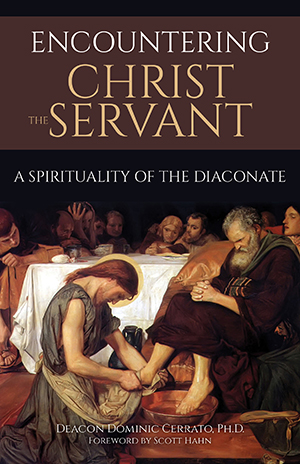 “Encountering Christ the Servant” (OSV, $18.95) by Deacon Dominic Cerrato explores the unique contribution and spirituality of the diaconate. The book draws heavily on the Catholic spiritual tradition and applies it to the diaconate with the goal of intimate communion with Christ the Servant. The book focuses on the interior life as the source of the deacon’s diaconate; that from which he draws his strength and ministry.
“Encountering Christ the Servant” (OSV, $18.95) by Deacon Dominic Cerrato explores the unique contribution and spirituality of the diaconate. The book draws heavily on the Catholic spiritual tradition and applies it to the diaconate with the goal of intimate communion with Christ the Servant. The book focuses on the interior life as the source of the deacon’s diaconate; that from which he draws his strength and ministry.
Topics include the interior life as the place of encounter, the distinctiveness of diaconal spirituality, the importance of empathy and the various struggles associated with growth in the spiritual life. From here, Deacon Cerrato moves into the need for abandonment, the awareness of the ever-present God, his hidden operations and the sacrament of the present moment.
Finally, Deacon Cerrato offers deacons some practical suggestions of how they can grow in intimacy with Christ the Servant through a daily prayer of consecration drawn from the diaconal prayer of ordination and an evening examen.
……………………………………………………………………………………………………………………………………………………………

